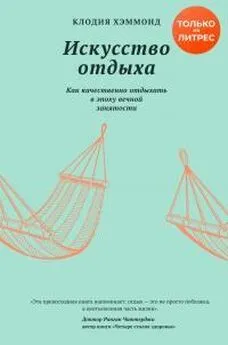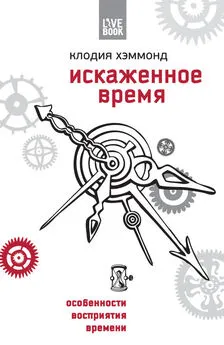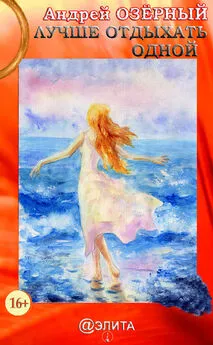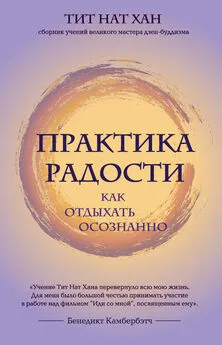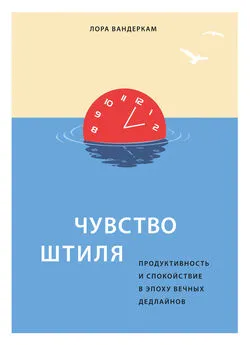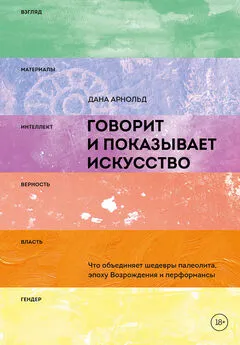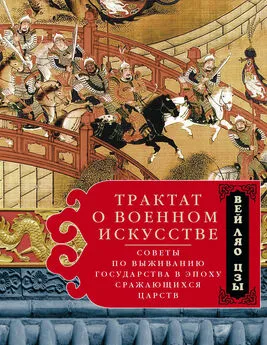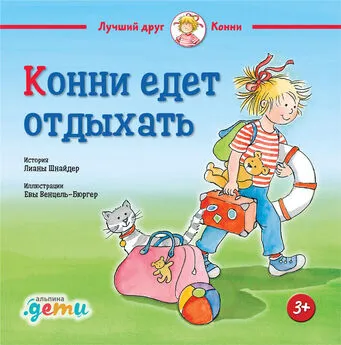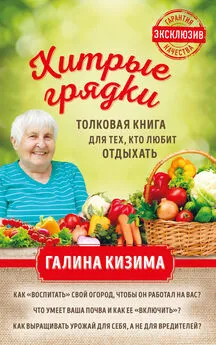Клодия Хэммонд - Искусство отдыха. Как качественно отдыхать в эпоху вечной занятости
- Название:Искусство отдыха. Как качественно отдыхать в эпоху вечной занятости
- Автор:
- Жанр:
- Издательство:неизвестно
- Год:2019
- ISBN:978-5-907056-51-0
- Рейтинг:
- Избранное:Добавить в избранное
-
Отзывы:
-
Ваша оценка:
Клодия Хэммонд - Искусство отдыха. Как качественно отдыхать в эпоху вечной занятости краткое содержание
Искусство отдыха. Как качественно отдыхать в эпоху вечной занятости - читать онлайн бесплатно ознакомительный отрывок
Интервал:
Закладка:
Вернуться
101
Kerner, C. & Goodyear, V.A. (2017) ‘The Motivational Impact Wearable Healthy Lifestyle Technologies: A Self-determination Perspective on Fitbits with Adolescents’. American Journal of Health Education, 48 (5), 287–97
Вернуться
102
Lee, I. et al (2019) ‘Association of Step Volume and Intensity with All-Cause Mortality in Older Women’. JAMA Internal Medicine,29 05 2019. doi:10.1001/jamainternmed.2019.0899
Вернуться
103
Etkin, J. (2016) ‘The Hidden Cost of Personal Quantification’. Journal of Consumer Research, 42 (6), 967–84
Вернуться
104
Greaney, M. (2016) ‘Laziness: A Literary-historical Perspective’. In Callard, F. et al (Eds) The Restless Compendium. London: Palgrave Pivot
Вернуться
105
Популярная британская телевикторина. (Прим. ред) .
Вернуться
106
Traon, A.P.L. et al (2007) ‘From Space to Earth: Advances in Human Physiology from 20 Years of Bed Rest Studies’. European ournal of Applied Physiology, 101, 143–94
Вернуться
107
Baines, E. & Blatchford, P. (2019) School Break and Lunch Time and Young People’s Social Lives: A Follow-up National Study, Final Report. London: UCL Institute of Education
Вернуться
108
Bellezza, S. et al (2017) ‘Conspicuous Consumption of Time: When Busyness and Lack of Leisure Time Become a Status ymbol’. Journal of Consumer Research, 44 (1), 118–38
Вернуться
109
Greaney, M. (2016) ‘Laziness: A Literary-historical Perspective’. In Callard, F. et al. (Eds) The Restless Compendium.London: Palgrave Pivot
Вернуться
110
US Bureau of Labor Statistics, Selected Paid Leave Benefits, Table 6. United States Department of Labor, 07 03 2017. https://www. bls.gov/news.release/ebs2.t06.htm
Вернуться
111
Kasperkevic, J. (2017) ‘Why is America so Afraid to Take a Vacation?’. The Guardian, 07 09 2015. https://www.theguardian. com/money/2015/sep/07/america-vacation-workaholicculture-labor-day
Вернуться
112
Strandberg, T.E. et al (2018) ‘Increased Mortality Despite Successful Multifactorial Cardiovascular Risk Reduction in Healthy Men: 40-year Follow-up of the Helsinki Businessmen Study Intervention Trial’. The Journal of Nutrition, Health and Aging, 22 (8), 885–91
Вернуться
113
Brooks, B. et al (2000) ‘Are Vacations Good for Your Health? The 9-year Mortality Experience After the Multiple Risk Factor ntervention Trial’. Psychosomatic Medicine, 62, 608–12
Вернуться
114
Kim, S. et al (2017) ‘Micro-break Activities at Work to Recove from Daily Work Demands’. Journal of Organizational Behavior, 38 (1), 28–44
Вернуться
115
Danziger, S. et al (2011) ‘Extraneous Factors in Judicial Decisions’. Proceedings of the National Academy of Sciences, 108 (17), 6889–92
Вернуться
116
Glockner, A. (2016) ‘The Irrational Hungry Judge Effect Revisited: Simulations Reveal that the Magnitude of the Effect i Overestimated’. Judgment and Decision Making, 11 (6), 601–10
Вернуться
117
Sievertsen, H.H. (2016) ‘Cognitive Fatigue in School’. Proceedings of the National Academy of Sciences, March 2016, 113 (10) 2621–4
Вернуться
118
Bosch, C. & Sonnentag, S. (2018) ‘Should I Take a Break? A Daily Reconstruction Study on Predicting Micro-Breaks at Work’. International Journal of Stress Management. http://dx.doi.org/10.1037/str0000117
Вернуться
119
Bönstrup, M. (2019) ‘A Rapid Form of Offline Consolidation in Skill Learning’. Current Biology, 29 (8), 1346–51
Вернуться
120
Sonnentag, S. & Zijlstra, F.R.H. (2006) ‘Job Characteristics and Off-job Activities as Predictors of Need for Recovery, Well-being, and Fatigue’. Journal of Applied Psychology, 91, 330–50
Вернуться
121
Jacobson, E. (1979) ‘Some Highlights of My Life’. Journal of Behavior Therapy & Experimental Psychiatry, 10, 5–9
Вернуться
122
Jacobson, E. (1977) ‘The Origins and Development of Progressive Relaxation’. Journal of Behavior Therapy & Experimental Psychiatry,
Вернуться
123
Nathoo, A. (2016) ‘From Therapeutic Relaxation to Mindfulness wentieth Century’. In Callard, F. et al (Eds) The Restless Compendium. London: Palgrave Pivot
Вернуться
124
Wilson, T. et al (2014) ‘Just Think: The Challenges of the Disengaged Mind’. Science, 345, 75–7
Вернуться
125
Stiles, A. (2012) ‘The Rest Cure, 1873–1925’. Branch, 10. http://www.branchcollective.org/?ps_articles=anne-stiles-the-restcure‐1873–1925
Вернуться
126
Chin, A. et al (2017) ‘Bored in the USA – Experience Sampling and Boredom in Everyday Life’. Emotion, 17 (2), 359–68
Вернуться
127
Mann, S. (2016) The Upside of Downtime: Why Boredom Is Good. London: Robinson
Вернуться
128
Cowan, N. et al (2004) ‘Verbal Recall in Amnesiacs Under Conditions of Diminished Retroactive Interference’. Brain, 127, 825–34
Вернуться
129
Вы могли подумать, что некоторые участники могли повторять слова про себя во время перерывов, но Дюэр так просто не обхитрить. Она заставляла участников запоминать слова на других языках, причем именно сложнопроизносимые. Это не позволяло им проговаривать слова вслух, чтобы лучше их запомнить. Таким образом была получена демонстрация того, что слова лучше вспоминаются, если ничего не делать.
Вернуться
130
Решение: все хорошо, что хорошо кончается; лучше синица в руке, чем жаворонок в небе.
Вернуться
131
От слов life – жизнь и admin – администратор. (Прим. ред.)
Вернуться
132
Crivelli, F. et al (2016) ‘Somnomat: A Novel Actuated Bed to Investigate the Effect of Vestibular Stimulation’. Medical & Biological Engineering & Computing, 54 (6), 877–89
Вернуться
133
Smith, R.P. (1958) How to Do Nothing with Nobody All Alone by Yourself. New York: Tin House Books. There’s also a lovely summary on Brainpickings, 24 10 2014. https://www.brainpickings.org/2014/10/24/how-to-do-nothing-with-nobody-all-alone-by-yourself/
Вернуться
134
Книга не выходила на русском, однако переводится это примерно так – «Как не делать ничего в одиночестве, в абсолютном уединении и полном безлюдье» (Прим. пер.) .
Вернуться
135
Rhodes, J. (2015) Instrumental, Edinburgh: Canongate, 204
Вернуться
136
Sack, K. (1998) ‘Georgia’s Governor Seeks Musical Start for Babies’. New York Times, 15 01 1998
Вернуться
137
Rauscher, F.H. et al (1993) ‘Music and Spatial Task Performance’. Nature, 365, 611
Вернуться
138
Chabris, C.F. (1999) ‘Prelude or Requiem for the “Mozart Effect”?’. Nature, 400, 826–7
Вернуться
139
Schellenberg, E. et al (2006) ‘Music Listening and Cognitive Abilities in 10 and 11 Year-olds: The Blur Effect’. Annals of the New York Academy of Sciences, 1060, 202–9
Вернуться
140
Pietchnig, J. et al (2010) ‘Mozart Effect – Schmozart Effect: A Meta-analysis’. Intelligence, 38, 314–23
Вернуться
141
Nantais, K.M. & Schellenberg, E.G. (1999) ‘The Mozart Effect: An Artefact of Preference’. Psychological Science,10 (4), 370–3
Вернуться
142
Trahan, T. et al (2018) ‘The Music that Helps People Sleep and the Reasons They Believe it Works’. PLOS One, 13 (11) e0206531. doi:10.1371/journal.pone.0206531
Вернуться
143
Saarikallio, S. & Erkkila, J. (2007) ‘The Role of Music in Adolescents’ Mood Regulation’. Psychology of Music, 35 (1), 88–109
Вернуться
144
Konečni, V. et al (1976) ‘Anger and Expression of Aggression: Effects on Aesthetic Preferences’. Scientific Aesthetics, 1, 47–55
Вернуться
145
North, A.C. & Hargreaves, D.J. (2000) ‘Musical Preferences During and After Relaxation and Exercise’. American Journal of Psychology, 113, 43–67
Вернуться
146
Bruner, G.C. (1990) ‘Music, Mood and Marketing’. Journal of Marketing, 54 (4) 94–104
Вернуться
147
Juslin, P. et al (2008) ‘An Experience Sampling Study of Emotional Reactions to Music: Listener, Music and Situation’. Emotion, 8 (5), 668–83
Вернуться
148
Linneman, A. et al (2015) ‘Music Listening as a Means of Stress Reduction in Daily Life’. Psychoneuroendocrinology, 60, 82–90
Вернуться
149
Summers, P. (2018) The Spirit of This Place: How Music Illuminates the Human Spirit. Chicago: University of Chicago Press, 70
Вернуться
150
Garrido, S. et al (2017) ‘Group Rumination: Social Interactions Around Music in People with Depression’. Frontiers in Psychology, 8, 490
Вернуться
151
Summers, P. (2018) The Spirit of This Place: How Music Illumin ates the Human Spirit. Chicago: University of Chicago Press, 150
Вернуться
152
Byrne, D. (2012) How Music Works. Edinburgh: Canongate, 137 & 332
Вернуться
153
Wilkinson, R. & Pickett, K. (2018) The Inner Level. London: Allen Lane, 117
Вернуться
154
Hawkley, L.C. & Cacioppo, J.T. (2010) ‘Loneliness Matters: A Theoretical and Empirical Review of Consequences and Mechanisms’. Annals of Behavioral Medicine, 40 (2), 218–27
Вернуться
155
Colette (1974) Earthly Paradise. London: Penguin.
Вернуться
156
Larson R. W. et al (1982) ‘Time Alone in Daily Experience: Loneliness or Renewal?’. In Peplau, L.A. & Perlman, D. (Eds) Loneliness: A Sourcebook of Current Theory, Research and Therapy. New York: Wiley
Читать дальшеИнтервал:
Закладка:
